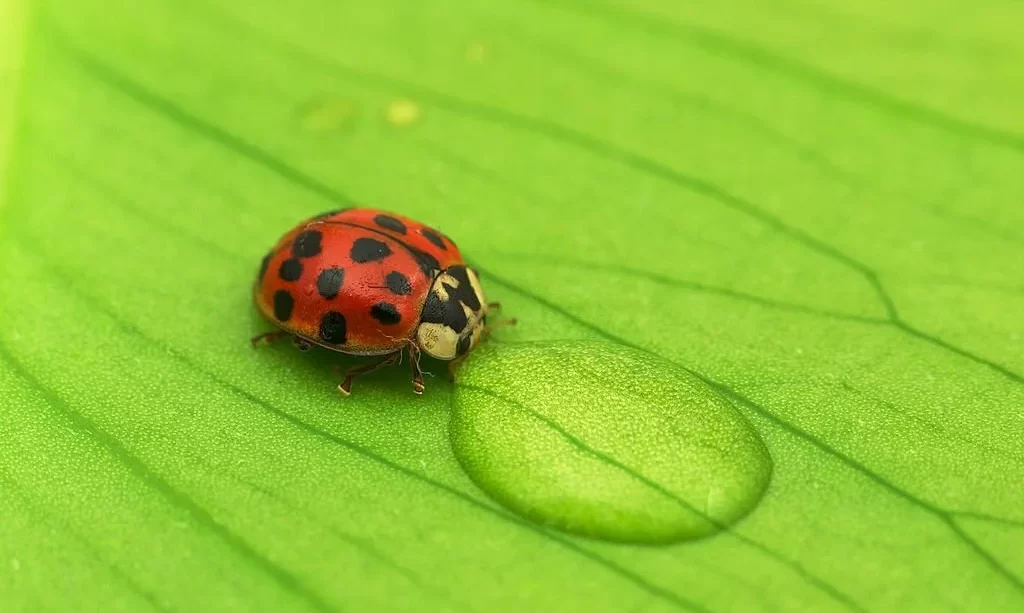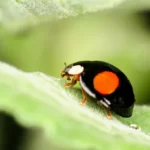In the enchanting world of gardens, ladybugs are revered as tiny, polka-dotted heroes, celebrated for their remarkable pest-controlling abilities. As they flit and flutter through lush foliage, these colorful insects are often the subject of admiration and curiosity. However, amidst the wonder of their presence, a common question arises: do ladybugs drink water?
Ladybugs, with their dainty appearance and voracious appetite for garden pests, are vital components of a thriving garden ecosystem. Yet, the mysteries of their daily habits and hydration needs have left garden enthusiasts pondering the extent of their interaction with water sources. In this article, we embark on an exploration of ladybugs, their life in the garden, and the role of water in their diet. By uncovering the secrets of these tiny garden heroes, we aim to shed light on their thirst and provide a deeper understanding of their presence in our outdoor sanctuaries.
The Life of Ladybugs
Before delving into the specifics of ladybugs’ water consumption, it is essential to grasp the fundamentals of their existence in the garden. Ladybugs, scientifically known as Coccinellidae, are small beetles characterized by their round or oval shape and striking coloration. They are welcomed inhabitants in gardens and agricultural landscapes due to their remarkable role as natural pest controllers.
Ladybugs are predominantly carnivorous, with their diets centering on soft-bodied insects such as aphids, scale insects, and mealybugs. Their voracious appetite for these garden pests has earned them the endearing nickname “aphid lion” or “aphid wolf.” As they patrol leaves, stems, and blossoms, ladybugs actively seek out these plant-damaging insects, displaying an unwavering dedication to keeping gardens free from infestations.
Water in the Ladybug Diet
While ladybugs are primarily carnivorous insects, water is an integral part of their diet, albeit in an indirect manner. Ladybugs obtain hydration from the insects they consume. Soft-bodied insects like aphids and mealybugs contain significant water content within their bodies. When ladybugs feed on these pests, they not only acquire vital nutrients but also ingest the water contained in their prey.
This indirect method of water intake serves a dual purpose for ladybugs. It quenches their thirst while simultaneously providing essential nourishment. The water content in the bodies of the insects they prey upon contributes to maintaining ladybugs’ hydration levels.
Ladybugs’ reliance on moisture from their prey showcases the intricate interconnections within the garden ecosystem. Their dietary preferences for insects rich in water content align with their evolutionary adaptation for efficiency and sustainability. This indirect means of hydration supports their survival while bolstering their role as guardians of garden greenery.
In the following sections, we will explore whether ladybugs actively seek out water sources, the connection between moisture and ladybug behavior, and how to support these garden heroes in their quest for hydration.
Drinking Water: Direct or Indirect?
The manner in which ladybugs obtain water is a subject of interest and inquiry. Unlike some insects that actively seek out water sources, ladybugs primarily derive their hydration indirectly. This indirect method involves ingesting the water content found within the bodies of the insects they prey upon. As ladybugs feed on aphids, mealybugs, and other soft-bodied insects, they not only extract essential nutrients but also acquire the moisture these prey insects contain.
The indirect nature of ladybugs’ water intake reflects their efficient adaptation to their carnivorous diet. It allows them to fulfill their hydration needs while capitalizing on the abundant water content of their prey. This adaptation aligns with their ecological role as predators that actively contribute to garden pest control.
While ladybugs predominantly rely on indirect water intake, there is still limited evidence to suggest that they might occasionally drink water directly, such as dewdrops or tiny droplets on plant surfaces. However, this direct method appears to be less common compared to their indirect hydration through prey consumption.
Understanding ladybugs’ unique method of obtaining water sheds light on their resilience and adaptability as garden protectors. Their diet not only sustains them but also indirectly hydrates them, emphasizing the interconnectedness of the garden ecosystem.
Water and Ladybug Lifecycles
The availability of water plays a pivotal role in various stages of the ladybug lifecycle. While adult ladybugs are primarily preoccupied with hunting for food and reproducing, water remains a vital component during their reproductive phase. Female ladybugs require adequate moisture for the process of laying eggs. The presence of water sources in the garden is crucial for ensuring the successful propagation of these beneficial insects.
Ladybug eggs, which are tiny, oval-shaped structures, are typically laid on the undersides of leaves near aphid colonies or other suitable prey. Adequate humidity and moisture in the environment are necessary for the proper development and hatching of ladybug eggs. Water is instrumental in maintaining the necessary conditions for the eggs to mature and for the young ladybug larvae to thrive upon hatching.
The availability of water sources in the garden thus plays a supporting role in the life cycle of ladybugs. These water sources, whether in the form of dew, rain, or water droplets on leaves, contribute to the overall health and reproductive success of these valuable garden allies.
As we consider the hydration needs of ladybugs, it becomes evident that maintaining garden moisture is not only essential for plant growth but also for sustaining the life cycles of these tiny yet formidable pest controllers. In the following sections, we will delve further into the connection between ladybugs and moisture, and how to create a garden that supports their presence and needs.
Ladybugs and Moisture: The Connection
The connection between ladybugs and moisture in the garden is multifaceted and dynamic. While ladybugs do not actively seek out water sources for drinking, their relationship with moisture is pivotal, particularly in their reproductive and developmental processes.
Humidity and moisture in the garden environment play a role in creating a suitable habitat for ladybug eggs and young larvae. Adequate moisture supports the hatching and initial survival of ladybug eggs, ensuring the continuation of their life cycle. It also influences the overall humidity levels in the garden, which can indirectly impact the well-being of these beneficial insects.
Furthermore, ladybugs’ efficiency as pest controllers is closely tied to the health of the plants they inhabit. Adequately hydrated plants are more likely to attract and sustain aphid populations, which are a primary food source for ladybugs. The interplay between plant health, insect abundance, and moisture levels creates a delicate balance that ultimately influences the success and abundance of ladybugs in the garden.
Understanding this intricate connection between ladybugs and moisture underscores the importance of maintaining an environment that supports their presence and well-being. A garden that provides suitable conditions for ladybug eggs, larvae, and adults contributes to their ability to thrive and serve as natural defenders of your plants.
The Watering Practices for Ladybug-Friendly Gardens
Creating a ladybug-friendly garden is not only about nurturing the plants they adore but also about ensuring adequate moisture levels in the garden environment. Here are some watering practices that can help support the well-being of ladybugs:
- Consistent Watering: Maintain regular and consistent watering of your garden to ensure that plants remain healthy and attract soft-bodied insects like aphids, which are a favorite food source for ladybugs.
- Plant Selection: Choose a variety of plants in your garden that provide moisture-retaining features, such as broad leaves and nectar-rich flowers. These plant choices can contribute to a humid microclimate that benefits ladybugs.
- Provide Habitat: Consider creating small water features or ponds in your garden to enhance the overall humidity. These features can serve as watering holes for ladybugs and other beneficial insects.
- Avoid Excessive Drought: While ladybugs can adapt to varying moisture conditions, excessive drought and arid environments may hinder their reproduction and activity. Strive to maintain a balanced level of moisture in your garden.
By adopting these watering practices and creating a habitat that aligns with the moisture needs of ladybugs, you can not only attract more of these tiny protectors but also contribute to the flourishing diversity of your garden ecosystem.
Conclusion
In the quest to understand whether ladybugs drink water, we unveil a fascinating aspect of their lives that underscores their importance as integral components of garden ecosystems. Ladybugs, with their unique approach to hydration through prey consumption, exemplify the intricacies of nature’s interconnected web.
Their presence in gardens is a testament to their vital role as natural pest controllers. As we consider the impact of moisture on their life cycles, we recognize the significance of creating garden environments that support their needs and well-being.
Ladybugs are not just charming red-and-black dots in our gardens; they are living indicators of a thriving ecosystem. By embracing responsible gardening practices that include maintaining moisture, we ensure a welcoming haven for ladybugs and other beneficial insects.
In conclusion, the water connection between ladybugs and gardens is a testament to the harmonious relationship between the natural world and our cultivated spaces. By nurturing our gardens with care and consideration, we provide ladybugs with the conditions they require to continue their relentless battle against garden pests, ultimately enhancing the vitality and beauty of our outdoor sanctuaries.



